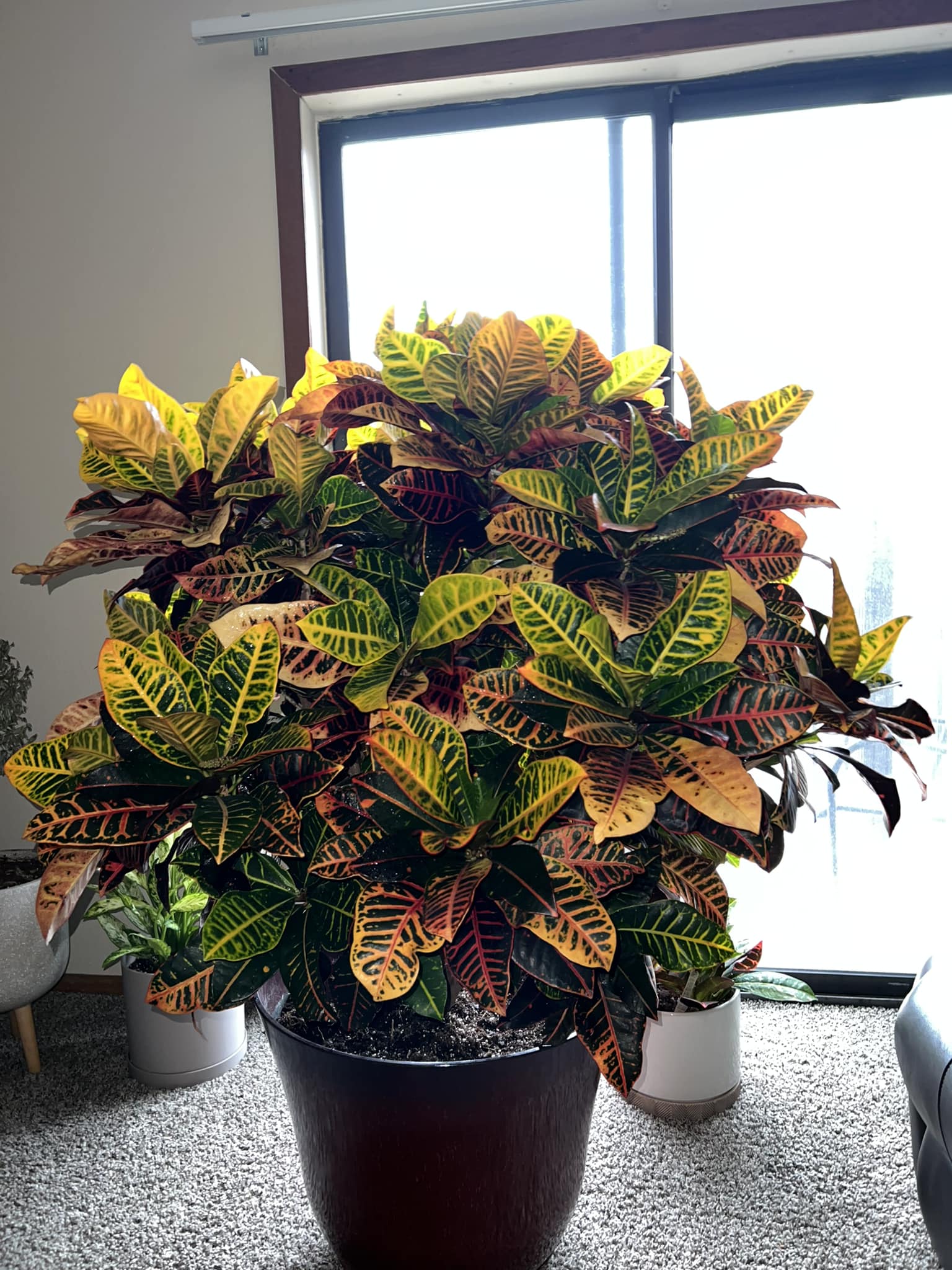
When the days grow shorter and the weather cools, our leafy houseplants often begin to sulk. But not the Croton. With its fiery blend of red, orange, yellow, and green, the croton plant thrives on attention—and rewards it with a show worthy of the season.
Known for its dramatic foliage and tropical flair, the croton (Codiaeum variegatum) is a standout in fall-themed home decor. But keeping those vivid leaves as bright indoors as they were in the nursery? That takes a bit of know-how.
So how do you protect its brilliant hues when sunlight fades and your heating system kicks in? In this guide, we’ll explore everything from light positioning to humidity tricks, and even feeding tips that help your croton shine all season long.
Why Crotons Are Perfect for Fall Décor
Before we dig into the care details, let’s talk about why crotons are a fall favorite.
The Fall Aesthetic in a Pot:
- Natural Color Palette: Their fiery tones echo autumn leaves—perfect for seasonal styling.
- Textural Interest: The thick, waxy leaves add structure and contrast to softer indoor plants.
- Visual Drama: Crotons look especially stunning in terracotta pots, rustic baskets, or gold-accented planters—ideal for your fall vignette.
1. Let There Be (Enough) Light
Is your croton craving more sun than your windows provide?
Light Is the #1 Key to Color:
Crotons need bright, indirect light to maintain their bold coloration. Without it, those gorgeous reds and oranges fade into a disappointing green.
Light Tips for Fall:
- South or West-Facing Windows: These get the most light—move your croton here in autumn.
- Avoid Harsh Direct Sun: While they love light, too much direct sun can scorch the leaves.
- Rotate the Pot: Turn your plant weekly to ensure even exposure and avoid leaning.
- Supplement with Grow Lights: If natural light is limited, use a full-spectrum LED grow lamp for 8–10 hours a day.
2. Water Wisely—Don’t Drown the Drama
Is your croton too wet… or too dry?
Crotons are sensitive to both overwatering and underwatering, and both issues can lead to dull leaves or leaf drop—especially as fall shifts your indoor climate.
How to Get It Just Right:
- Check Before Watering: Stick your finger into the top 1–2 inches of soil. If it’s dry, it’s time to water.
- Use Room Temperature Water: Cold water can shock the roots.
- Drainage Matters: Make sure your pot has drainage holes and don’t let it sit in excess water.
- Reduce Watering Frequency: Crotons drink less in fall than in summer, so adjust your routine accordingly.
3. Humidity = Happiness
Do you live in a dry climate or use indoor heating?
Fall often brings lower humidity indoors, especially once heaters fire up. But crotons love moisture in the air—they’re native to the tropics, after all.
Easy Ways to Raise Humidity:
- Group Plants Together: Plants release moisture and help each other thrive.
- Use a Pebble Tray: Fill a shallow tray with pebbles and water, then place your plant pot on top (not directly in water).
- Mist Regularly: Lightly mist the leaves every few days.
- Humidifier Help: A small room humidifier can do wonders, especially during dry seasons.
4. Keep It Cozy—but Not Toasty
How cold is too cold for your croton?
Crotons don’t like the cold. Temperatures below 60°F (15°C) can cause stress and leaf drop.
Temperature Tips:
- Ideal Range: 65–80°F (18–27°C).
- Avoid Drafts: Don’t place crotons near windows, doors, or vents where cold air may rush in.
- No Sudden Changes: Keep the temperature stable; avoid sudden fluctuations which can shock the plant.
5. Feed to Keep the Fire Burning
Does your croton still need fertilizer in fall?
While you should reduce heavy feeding in fall and winter, a light feeding once a month through early fall can help maintain vibrant colors.
Best Fertilizers:
- Balanced Liquid Fertilizer (10-10-10): Dilute to half strength and apply monthly.
- Organic Options: Compost tea or worm castings also work well.
- Stop Feeding by Late Fall: Once growth slows significantly, let the plant rest.
6. Clean the Leaves for a Color Refresh
Do your croton’s leaves look dusty or dull?
Dust buildup can block light and dull those brilliant colors.
Simple Leaf Care:
- Wipe Gently: Use a damp, soft cloth to clean leaves every 2 weeks.
- No Leaf Shine Sprays: These can clog pores—stick to water and cloth.
- Check for Pests While You’re At It: Look for mealybugs or spider mites hiding under leaves.
7. Should You Repot in Fall?
Is fall the right time to move your croton to a new home?
Ideally, repotting should happen in spring or early summer. But if your croton is root-bound and struggling, it’s okay to gently repot in early fall.
Repotting Tips:
- Go One Size Up: Don’t jump to a huge pot; aim for just 1–2 inches wider.
- Use Well-Draining Soil: A mix of potting soil with perlite or sand keeps things airy.
- Water Well After Repotting: But don’t fertilize for 3–4 weeks to avoid shock.
FAQ: Fall Croton Care
Why are my croton leaves turning dull or dropping?
This is often caused by:
- Low light levels
- Cold drafts
- Over or underwatering
- Sudden changes in humidity
Can I move my outdoor croton indoors for fall?
Yes! Be sure to:
- Inspect for pests before bringing it in.
- Gradually acclimate it to lower light over a week.
- Repot if needed, especially if it was in garden soil.
What’s the best way to display crotons indoors in fall?
- Use decorative pots with fall textures (like copper, rattan, or terracotta).
- Pair with pumpkins, rustic baskets, and cinnamon-scented pinecones for seasonal flair.
- Place near windows or use spotlighting to enhance its colors as natural light wanes.
